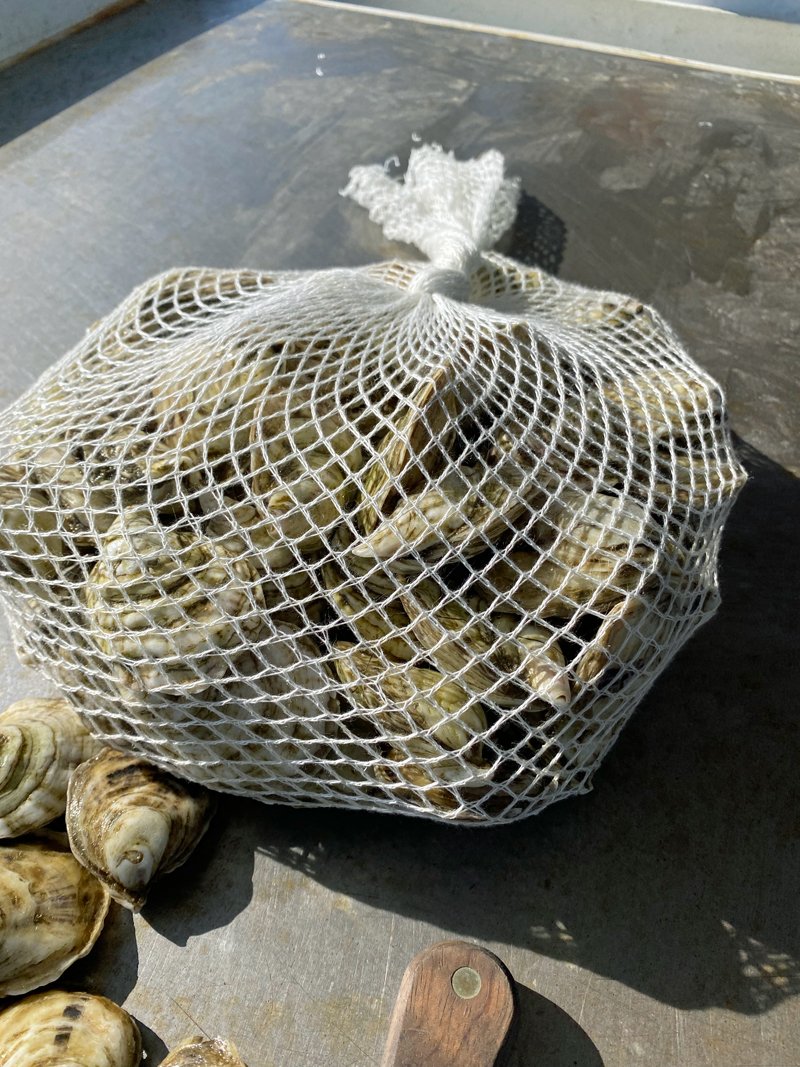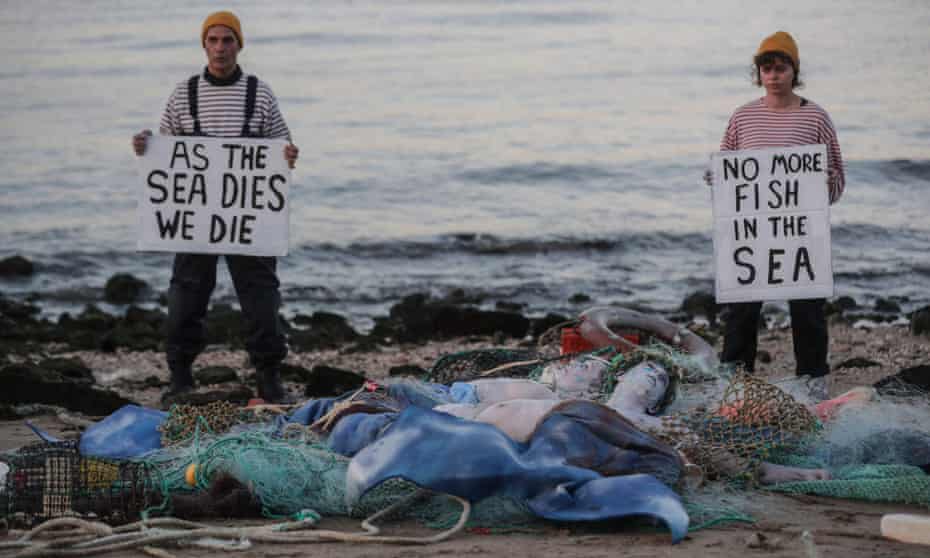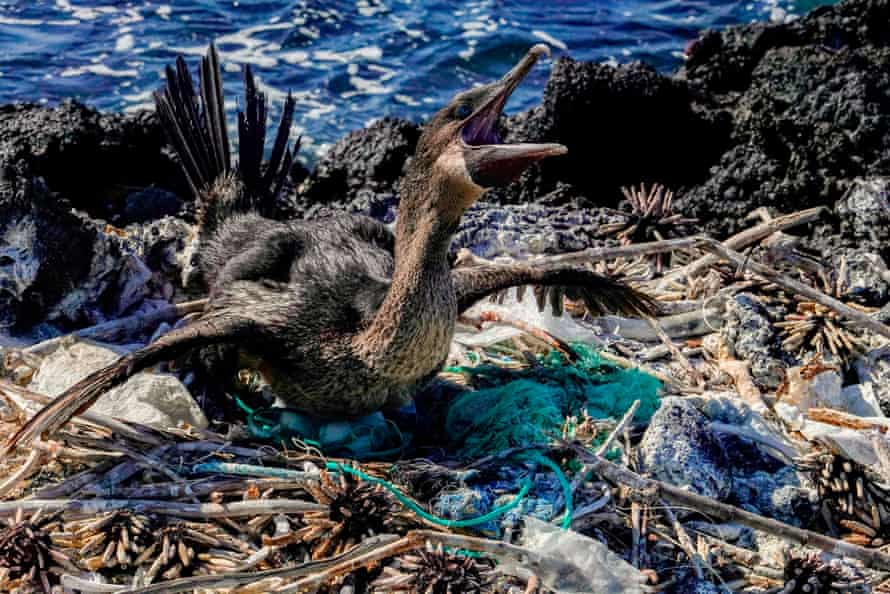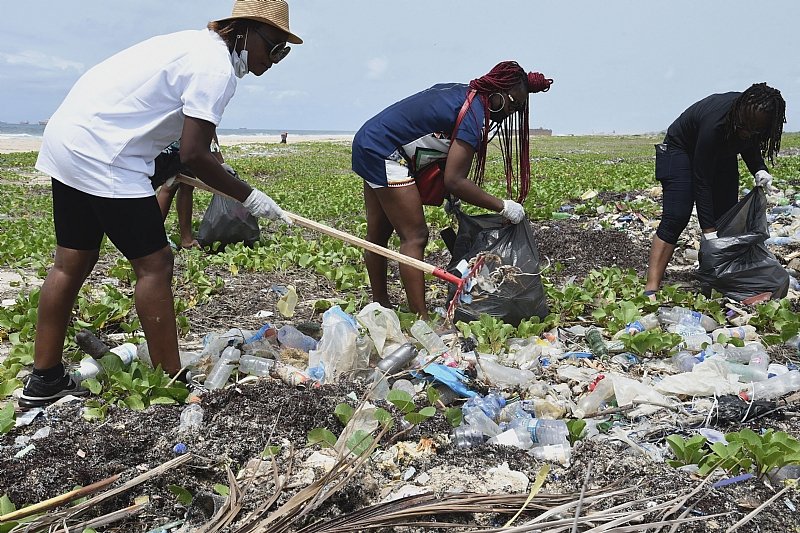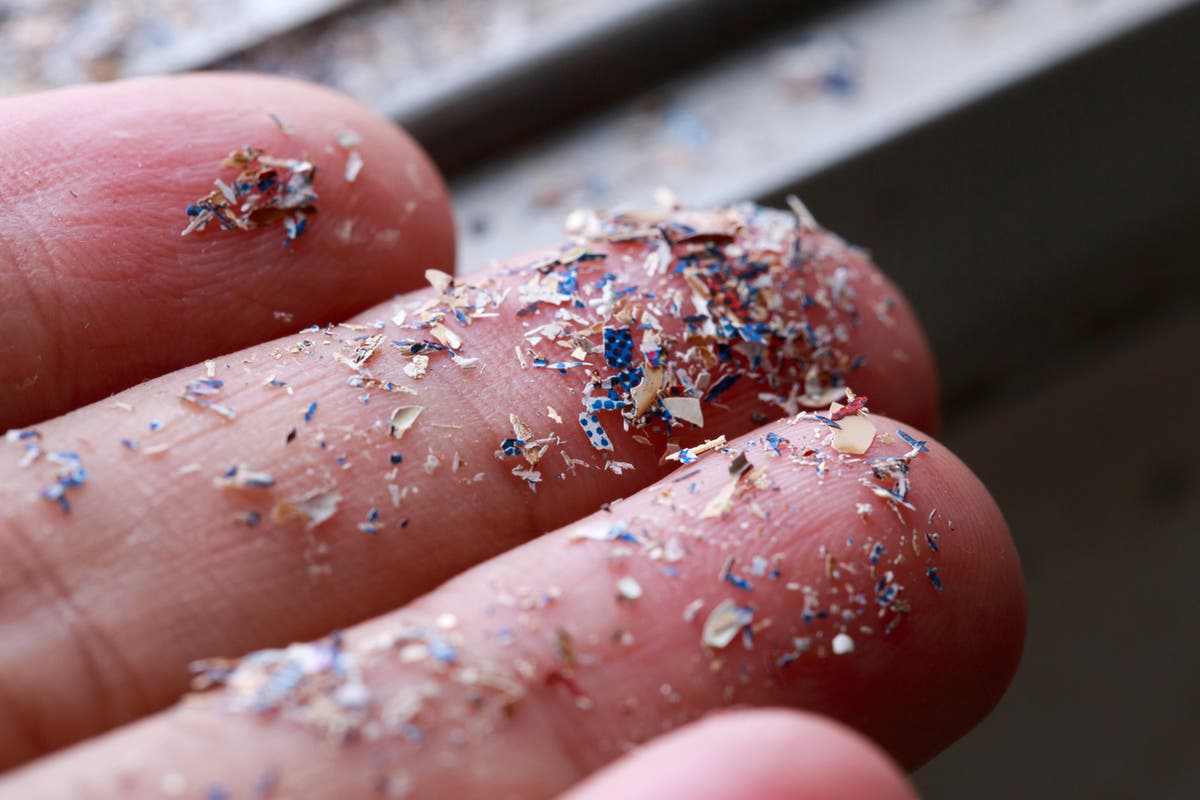Erin Adams steers a refurbished lobster boat down Harraseeket River toward Casco Bay in southern Maine. As she passes the tiny Pound of Tea Island, where sea gulls lounge and a lone red Adirondack chair sits invitingly at the water’s edge, her destination looms in the distance: a 10-acre oyster farm. It’s a windy day and the boat pitches and rolls as Adams slows near a line of floating black oyster cages undulating in the swells.
Aquaculture both contributes to and is potentially harmed by the ocean plastics crisis.
Adams is harvesting today with her business partner Eric Oransky, who works fast, pulling up oyster bags and tossing them onto the deck. Dumping the contents onto a processing table, they count the oysters in groups of 10, occasionally knocking two together to make sure they’re alive. Then, Oransky sends each group of 10 through a chute and Adams catches them in mesh bags. Voila! They’re ready for delivery fresh off the boat.
These mesh bags aren’t made from ordinary polypropylene mesh, however. They’re woven out of string made with 100-percent European beechwood, which is sustainably harvested by thinning forests certified by the Forest Stewardship Council or the Programme for the Endorsement of Forest Certification. They’re the only plastic-free, biodegradable, home-compostable oyster “harvest” bags on the market.
Maine Ocean Farms uses roughly 1,200 of these bags every season. The bagging material is sold by Ocean Farms Supply, a business launched last year by Maine Ocean Farms and helmed by Adams. And although the company sells the material to oyster, clam, and mussel growers and wholesale distributors as far away as Mexico, California, and Florida, most of its business is local.
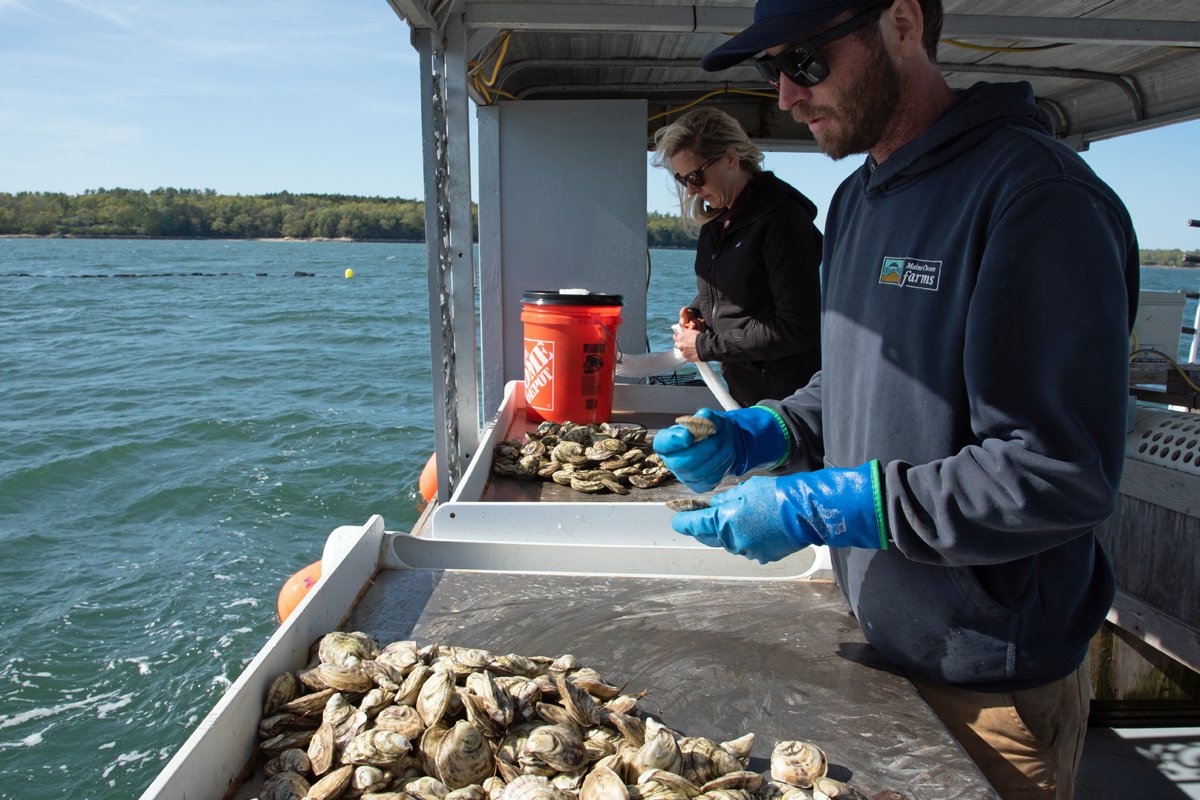
Erin Adams and Eric Oransky counting oysters. Adams is cutting a mesh bag from the roll of material in the background. (Photo credit: Meg Wilcox)
Already, the company’s bags have replaced the use of 14 linear miles of polypropylene mesh, according to Adams, who adds: “We are just beginning.”
Demand for non-plastic aquaculture gear is growing, as evidenced by the hundred or so seafood farmers who packed into a session at the Northeast Aquaculture Conference in April to hear Adams and others speak on the topic.
Aquaculture both contributes to and is potentially harmed by the ocean plastics crisis. Much of the industry’s gear, from ropes to cages to flotation devices, are made of plastic. Over time, that plastic degrades, generating millimeter-sized particles that can be ingested by shellfish and finfish, potentially harming their health. While harvest bags are a small part of the plastics used on a typical oyster farm—and in aquaculture more broadly—replacing them with a non-plastic biodegradable material is a step in the right direction.
They’re just one in a growing number of emerging innovations that mariculturists—small-scale shellfish and kelp growers—are developing to reduce their contribution to the ocean plastics crisis. Other new products include kelp-based ropes and lobster bait bags, oyster cages made solely from wood and metal, and cotton and hemp-based systems for growing shellfish larvae. While innovators are still grappling with longevity, durability, and the cost-competitiveness of new materials, the trend shows some promise.
“If you can create a biodegradable material, or something that’s more benign [for farming shellfish], then you’re improving the health of your product, the quality of your product, and the environment at the same time. It’s a win-win-win,” said Joel Baziuk, associate director, Global Ghost Gear Initiative, at the Ocean Conservancy.
Ocean Plastics and Aquaculture
Every year, 11 million metric tons of plastic enters the oceans, which are already clogged with an estimated 15 to 50 trillion pieces of plastic that never fully break down, but instead fragment into smaller and smaller pieces. Roughly 80 percent of that plastic comes from land-based sources, including wastewater, according to Britta Baechler, senior manager of ocean plastics research at the Ocean Conservancy.
Aquaculture contributes to ocean plastic pollution in three main ways, Baziuk told Civil Eats. Gear is lost from open water cages, wave action and extreme weather abrade plastic ropes, nets, and flotation systems, and single-use plastics used during routine operations can enter the ocean, particularly in regions with poor waste management systems.
“We know that [aquaculture] is a major vector, we just don’t know exactly how much, because there’s not enough research,” said Baziuk.
“People told us they’d been looking for 15 years,” for a non-plastic packaging material, Oransky said. “It’s amazing that a few mariners, woodworkers, and shipbuilders figured it out.”
Some 1,300 marine animal species have been found to ingest ocean plastics, said Baechler. Bivalves filter enormous volumes of water to feed, which means that microplastics can get trapped in their gills or guts and cause blockages. Studies show that microplastics can decrease the ability of clams, oysters, and mussels to create energy; they can hinder muscle function and impair reproduction and growth. Hormone-disrupting chemicals like bisphenols and phthalates, which leach from microplastics, can also change marine animals’ behavior or affect their ability to grow, reproduce, and feed effectively.
Little is known about the impacts to humans who consume shellfish contaminated with microfiber, and more research is needed. But that doesn’t mean people shouldn’t consume shellfish, Baechler says. “It’s not a great thing for human health that we’re consuming microplastics, but it’s not a problem that’s specific to shellfish or seafood. It’s across the human food system.”
Pandemic-Inspired Innovation
Energetic and intense, Oransky grew up in Freeport, Maine, and spent summers sailing in Casco Bay. His passion for the water led him to cofound Maine Ocean Farms in 2017, after working as a woodworker.
Like many in Maine’s mariculturist community, Oransky is young, innovative, and environmentally minded. “Those are the people who are driving the interest in reducing plastics and coming up with non-fossil fuel-based technologies,” Sebastian Belle, executive director of the Maine Aquaculture Association, told Civil Eats.

